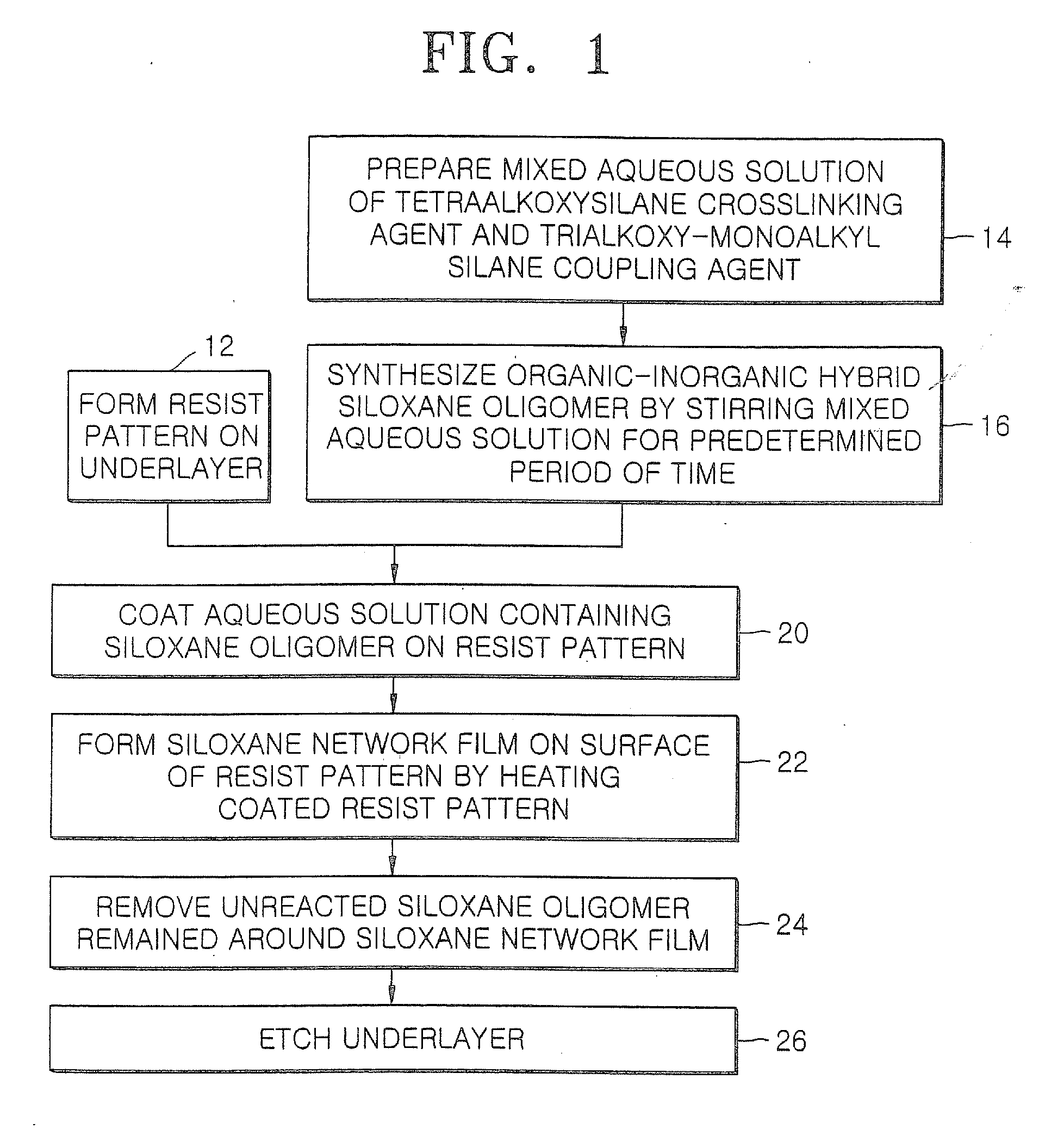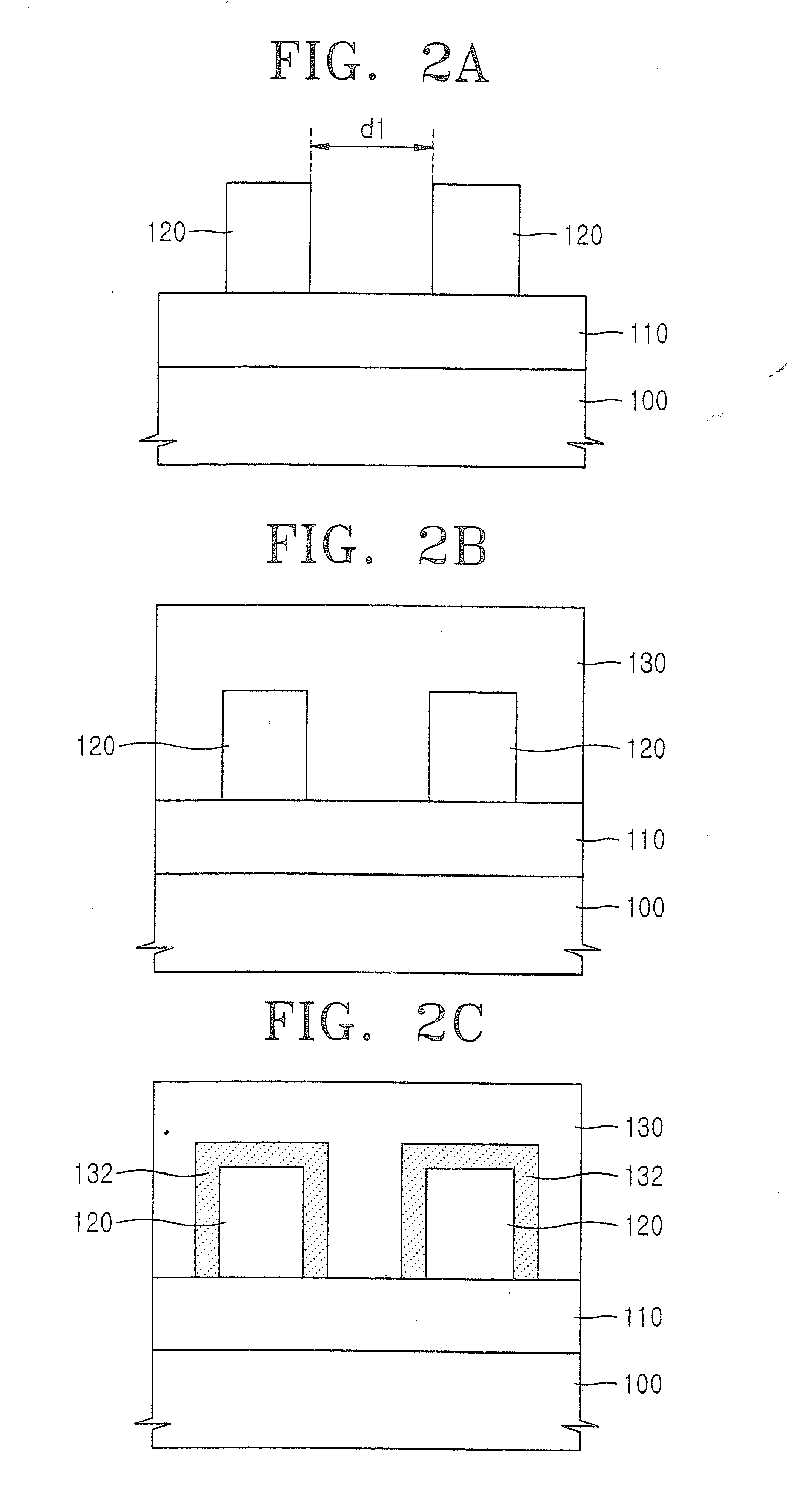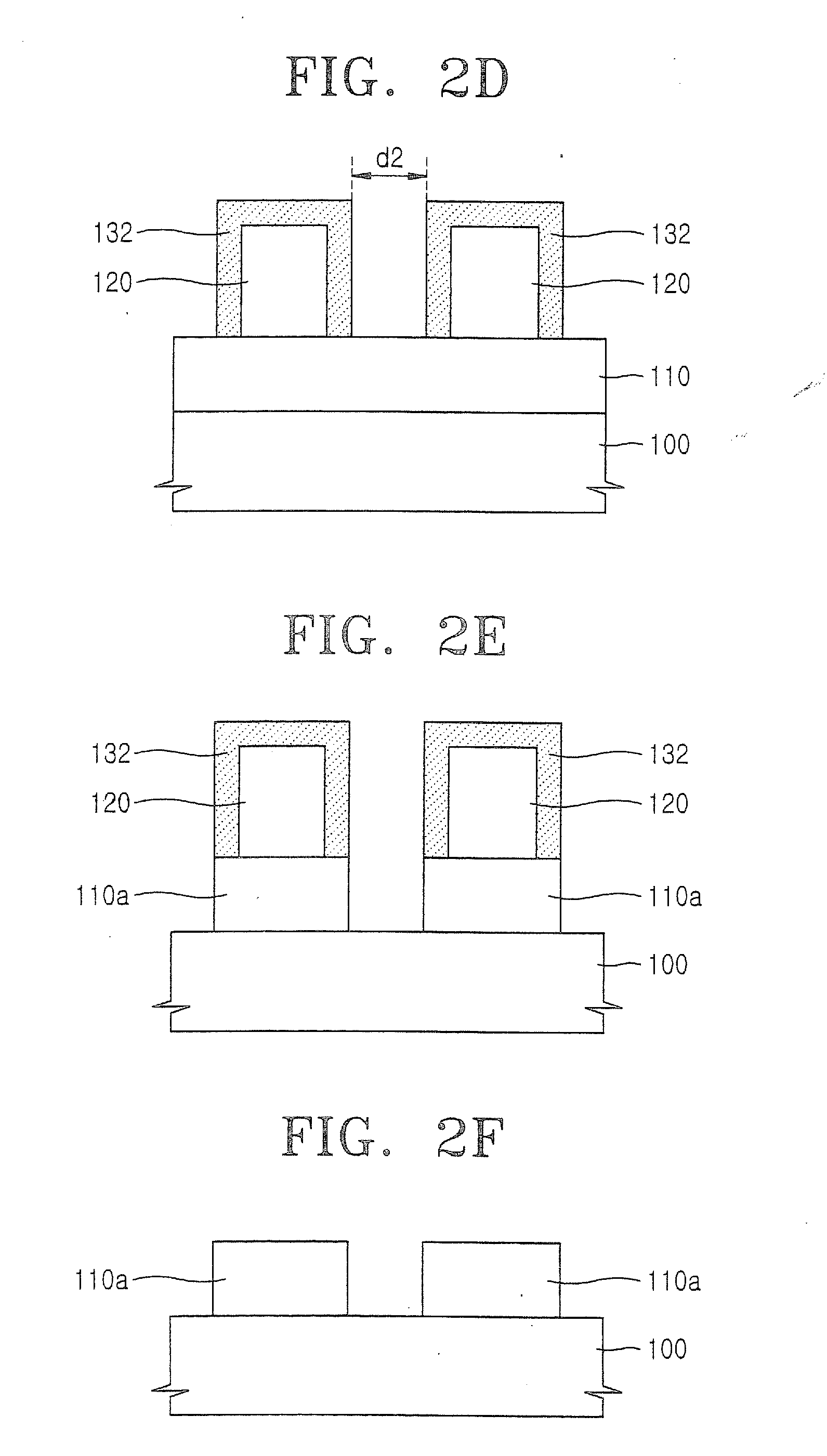Mask Patterns for Semiconductor Device Fabrication and Related Methods and Structures
a semiconductor device and mask pattern technology, applied in the field of mask pattern for semiconductor device fabrication, can solve the problems of deteriorating dry etching characteristics, difficult to satisfy resolution and dry etching characteristics simultaneously, etc., and achieve the effect of ensuring the vertical sidewall profile of the mask pattern remains relatively unchanged, sufficient resistance to dry etching, and simple and inexpensive process
- Summary
- Abstract
- Description
- Claims
- Application Information
AI Technical Summary
Benefits of technology
Problems solved by technology
Method used
Image
Examples
example 1
[0053]Organic antireflective films (such as DUV-30, Nissan Chemical Industries, Ltd.) were formed to thicknesses of 36 nm on bare silicon wafers and photoresists (such as SAIL-G24c, ShinEtsu Chemical Co. Ltd.) were coated thereon to form resist films with thicknesses of 240 nm. The wafers, on which the resist films were formed, were subjected to soft baking. The films thus formed were classified into five sample groups. The sample groups were subjected to exposure with ArF (193 nm) stepper (ASML 1100) specified with numeric aperture (NA) of 0.75 (annular illumination: 0.85-0.55) and exposure light energy of 22 mJ / cm2, 23 mJ / cm2, 24 mJ / cm2, 25 mJ / cm2, and 26 mJ / cm2, respectively. The sample groups were then subjected to post-exposure baking (PEB). The five sample groups were then developed with a 2.38 wt % tetramethylammonium hydroxide (TMAH) solution to form, on the wafers, resist patterns with openings defining hole patterns with CDs (critical dimensions) of 97.9 nm, 109.6 nm, 122....
example 2
[0055]Siloxane network films for five sample groups were formed on resist patterns in the same manner as in Example 1 except that wafers coated with a siloxane oligomer-containing aqueous solution were heated at 110° C. for 60 seconds. CDs of the openings of the resist patterns exposed by the siloxane network films were 83.0 nm, 91.5 nm, 96.8 nm, 103.6 nm, and 111.7 nm for the five sample groups, respectively. In comparison with the results of Example 1, an increase of a heating temperature in this Example increased the thickness of the siloxane network films formed on surfaces of the resist patterns, so that the CDs of the openings were further reduced with increased temperatures.
[0056]According to embodiments to the present invention, an organic-inorganic hybrid siloxane network film (which is a sol-gel reaction product induced by an acid of a resist pattern) may be formed on the resist pattern to provide a mask pattern with microdimensional openings above a wavelength limit for p...
PUM
| Property | Measurement | Unit |
|---|---|---|
| temperature | aaaaa | aaaaa |
| thicknesses | aaaaa | aaaaa |
| thicknesses | aaaaa | aaaaa |
Abstract
Description
Claims
Application Information
 Login to View More
Login to View More - R&D
- Intellectual Property
- Life Sciences
- Materials
- Tech Scout
- Unparalleled Data Quality
- Higher Quality Content
- 60% Fewer Hallucinations
Browse by: Latest US Patents, China's latest patents, Technical Efficacy Thesaurus, Application Domain, Technology Topic, Popular Technical Reports.
© 2025 PatSnap. All rights reserved.Legal|Privacy policy|Modern Slavery Act Transparency Statement|Sitemap|About US| Contact US: help@patsnap.com



